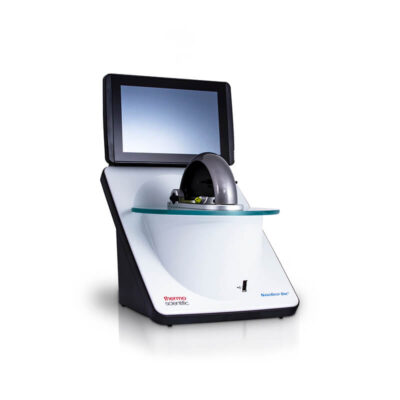HOW DOES A CENTRIFUGE WORK? THE SCIENCE BEHIND CENTRIFUGATION
‘Centrifuge’ is a word that might conjure up images of space ships, white suits, and all things science fiction, but what does it really mean? How does a centrifuge work? Bringing a centrifuge into the classroom can open the door for new kinds of scientific learning and discovery, so here’s everything you need to know about the centrifuge.
CENTRIFUGAL FORCE
Centrifugal force is a rotational force that acts upon an object from the centre point outwards. In other words, imagine that you’re on a playground, sitting on a roundabout which your friend is spinning at a faster and faster rate. You will probably find that you begin to slide away from the centre pole and toward the outer edge of the roundabout. If you don’t hold on to the pole or another one of the protruding rails, you risk flying off the device altogether. This is an example of centrifugal force because the force is, essentially, pushing you away from the centre axis of rotation (in this case, the pole). If there were a rotational force pushing you in towards the middle of the roundabout, that would be referred to as centripetal force.
WHAT IS CENTRIFUGATION?
Knowing this, centrifugation is then the act of applying a centrifugal force onto an object or substance. Typically, within fields of science like chemistry or molecular biology, centrifugation is used to separate molecules of varying density A substance containing two different molecules, let’s say, is placed in a solution and put inside what’s called a centrifuge. Then the centrifuge spins at rapid speeds to produce the centrifugal force we mentioned earlier. This then causes the molecules to separate.
Much like you would be forced toward the outer edge of the playground roundabout, while your friend, who’s holding onto the centre pole, would not, molecules of certain densities are forced to the outer edges of the centrifuge while others remain closer to the centre axis of rotation. In laboratory centrifuges, where particles are often tested within a liquid solution, the heavier particles, or the ones with greater density, will sink to the bottom of the solution, while the lighter, or less dense, ones float to the top.
HOW DOES A CENTRIFUGE WORK?
As you now know, the centrifuge is the machine through which centrifugal force is applied to substances that scientists may wish to separate. For example, blood cells and plasma. These are two substances of different densities that, together, make up our blood. When placed into a centrifuge and acted upon by a centrifugal force, they will separate, making it easier to work with each one on its own.
Believe it or not, centrifuges are not only found in science labs but often in our own homes! Washing machines are, in fact, types of centrifuges. During the spin cycle, your wet clothes and the water are the two substances that the washing machine centrifuge is trying to separate. So, it spins quickly, producing a force that moves outward from its centre. This centrifugal force pulls your clothes toward the edges of the washing machine, which are often covered in small holes.
Once pressed against the sides of the machine, the force then draws the water out of your clothes. This is why you will often find all of your clothes mashed up against the sides of the washer when you go to take them out. It’s also the reason why your clothes aren’t sopping wet when you go to put them in the dryer or hang them on the line. So next time you’re trying to remember what a centrifuge is or how it works, just remember your washing machine.
OTHER COMMON USES FOR A CENTRIFUGE
We mentioned blood separation earlier, but let’s dive into that a bit further. One of the more common uses of a centrifuge is for separating red blood cells from blood plasma. This can come in handy when doctors need to transfuse plasma into their patient or test for abnormalities in red blood cells alone.
A centrifuge can also be used to help astronauts learn to withstand extremely high forces. Though the spinning motion does not really reflect what they will experience traveling to and from space, the kind of pressure exerted upon them as they are strapped to the outer panels of a large centrifuge can simulate the forces felt while in the space shuttle during take-off and re-entry.
BENEFITS OF CENTRIFUGE IN THE CLASSROOM
Centrifuges and similar equipment, like rotators, can provide great hands-on learning for students, especially those who may otherwise struggle to grasp certain topics. In the chemistry and biology classrooms, table-top centrifuges can be applied to any lesson involving solvents, solutions, mixtures, and the separation of cells or substances. It’s a great way to bring complex ideas to life and provide demonstrations that will reinforce what they are learning through their assigned reading and lectures.
Another benefit of using bench-top centrifuges in the classroom is that they can help teach students about the importance of preparation leading to an experiment. In order for a centrifuge to work properly, it is important to know that other factors aside from density can affect the results. Temperature and speed of rotation also play a role. Having centrifuges for students to use can help them practice taking stock of each detail in an experiment before they start to use the machinery.
A VALUABLE LESSON TO LEARN
Centrifugation is a fascinating subject and one that is necessary to learn for anyone with an interest in molecular biology, physics, chemistry, or science in general. It can be well-grasped through hands-on learning experiences, which is why bringing table-top centrifuge machines into the classroom can help students understand this highly helpful process in a more tangible way. Now that you are outfitted with all the basic knowledge on centrifuges, you can be confident in your response the next time someone asks, ‘how does a centrifuge work?’
If you’re considering adding a centrifuge rotator to your classroom, check out the equipment we have available and don’t hesitate to get in touch if you have any questions.






